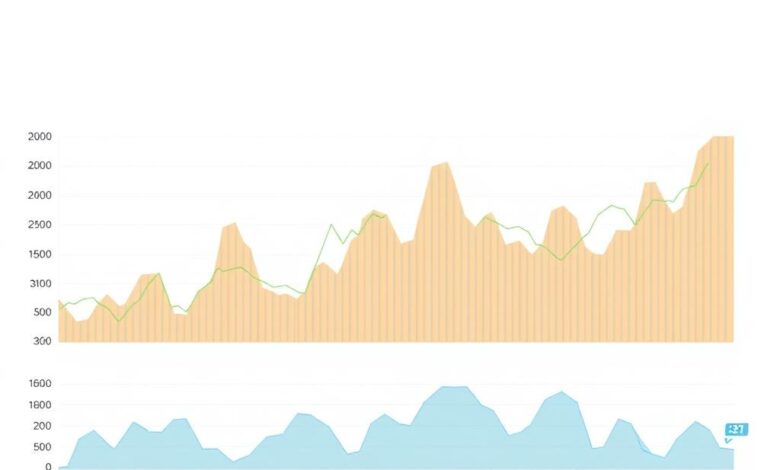What is financial leverage and how to use it wisely

Leverage can amplify your investment returns, but it requires a disciplined approach to borrowing. When utilized correctly, this strategy allows you to enhance your portfolio’s performance without needing additional capital. For instance, employing a 2:1 leverage ratio can double your potential gains in a rising market, turning modest investments into substantial profits.
However, with increased potential rewards come heightened risks. It’s crucial to assess your risk tolerance and market conditions before committing to leveraged investments. A downturn could lead to significant losses, surpassing your initial stake. Therefore, maintaining a solid risk management plan is essential for safeguarding your assets while pursuing higher returns.
Engaging in responsible investing means not just chasing profits but also understanding the implications of debt on your financial health. Prioritize diversification and ensure that any borrowed funds are directed toward high-conviction opportunities. By balancing ambition with caution, you can navigate the complexities of leverage while optimizing your overall investment strategy.
Calculating Your Leverage Ratio
To determine your borrowing capacity, calculate the leverage ratio using the formula: Total Debt ÷ Total Assets. A ratio above 1 indicates more debt than assets, increasing financial risks.
For instance, if your total debt is $200,000 and total assets are $300,000, your leverage ratio would be 0.67. This suggests a balanced approach to borrowing while still permitting responsible investing.
Monitor this metric regularly; aim for a ratio below 0.5 for stability. Higher ratios may yield greater returns but also heighten risks associated with economic downturns or interest rate hikes.
Diversifying investments can mitigate risks from high borrowing levels. Consider allocating funds across various sectors to protect against volatility in one specific area.
Leverage offers potential benefits, but understanding the implications of your ratio is crucial for sustaining long-term investment success.
Benefits of Using Debt
Utilizing borrowed funds can significantly enhance returns on investments. By strategically leveraging debt, investors can amplify their potential gains while maintaining a manageable level of risk.
A crucial advantage of debt financing is the ability to invest more capital than available liquid assets would allow. This margin enables investors to capitalize on opportunities that may yield higher returns compared to the cost of borrowing. For instance, if an investment generates a return greater than the interest rate on the debt, it leads to net positive earnings.
Responsible investing using debt necessitates a clear understanding of associated risks. High leverage can magnify losses during downturns; thus, it’s vital to maintain a balanced approach. Establishing limits for leverage ratios can protect against excessive risk exposure and ensure sustainability.
Moreover, utilizing debt can provide tax advantages in many jurisdictions. Interest payments on loans are often tax-deductible, enhancing overall profitability. Investors should evaluate local regulations and consult with financial advisors to maximize benefits while remaining compliant.
In conclusion, judicious use of borrowed funds offers significant advantages in terms of increased potential returns and tax benefits. However, this strategy requires disciplined management and thorough analysis of risks involved to ensure long-term success.
Avoiding Common Pitfalls
Carefully assess your margin before taking on additional debt. High leverage can amplify returns but also significantly increases exposure to market volatility. A conservative approach to borrowing helps maintain stability during downturns.
Establish a clear strategy for managing risks associated with debt. This includes setting stop-loss orders and monitoring economic indicators that could affect your investments. Being reactive rather than proactive can lead to losses that exceed initial expectations.
Analyze the cost of borrowing versus potential returns meticulously. Calculate interest expenses accurately, as excessive borrowing may erode profits. Always compare different financing options to ensure favorable terms and lower overall costs.
Diversify your investments to minimize the impact of adverse market movements on your portfolio. Concentrating too heavily in one asset class increases risk; spreading investments across various sectors can help mitigate this concern.
Regularly review and adjust your leverage ratio based on performance metrics and changing market conditions. An inflexible approach can result in missed opportunities or unplanned financial strain.
Lastly, avoid emotional decision-making when it comes to leveraging funds. Stick to your predetermined financial plan, and resist the temptation to overextend yourself based on short-term market trends or news cycles.
Strategies for Risk Management
Prioritize diversification across asset classes to mitigate risks associated with borrowing. This means allocating investments in various sectors, such as equities, bonds, and real estate, reducing exposure to any single market downturn.
- Set Clear Limits: Define a maximum leverage ratio that aligns with your risk tolerance. Establishing limits helps maintain discipline and prevents overexposure.
- Regular Monitoring: Continuously assess your portfolio’s performance and adjust your strategy based on changing market conditions. Use key performance indicators to gauge returns effectively.
- Use Hedging Techniques: Employ options or futures contracts to hedge against potential losses. This can provide a safety net during volatile periods.
- Maintain an Emergency Fund: Keep reserves that cover at least six months of expenses. This buffer allows you to manage debt obligations even during downturns.
Consider utilizing stop-loss orders to limit potential losses on leveraged positions. By automatically selling assets at predetermined prices, you can protect your investment from significant declines.
- Diversify Debt Instruments: Explore different types of loans and credit facilities to optimize cost while managing risks effectively.
- Engage in Responsible Investing: Choose investments that align with ethical standards and sustainability principles, which tend to be less volatile over time.
- Educate Yourself: Stay informed about market trends and economic indicators that could impact your investments. Knowledge enhances decision-making capabilities.
Avoid emotional decision-making by establishing a systematic approach based on data analysis. Relying on metrics rather than feelings can lead to better outcomes in high-stakes environments.
The integration of these strategies will not only enhance your ability to manage risks but also position you for sustainable growth while navigating the complexities of leveraging opportunities for higher returns.







